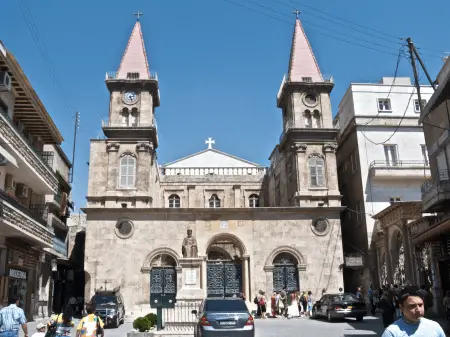The word Catholic means “universal” in old Greek. True to its name, Catholicism is the largest major Christian movement, with members spread across all seven continents. From the Eastern Catholic churches to the Roman Catholic Church, Catholicism comprises a diverse set of ethnicities, traditions, liturgical services, and theological stances. Despite these differences, all Catholics, regardless of location, accept the leadership of the Catholic Bishop of Rome, follow the Nicene Creed as the basic statement of faith, and recognize seven sacraments. This article will discuss the differences between the Catholic Church and the Roman Catholic Church.
Summary Table
| Catholic | Roman Catholic |
| Over 1.27 billion members worldwide | Over 1.2 billion members worldwide |
| Claim succession from Peter, the first Bishop of Rome; many also recognize the role of other founders in specific geographic locations | Claim succession from Peter, the first Bishop of Rome |
| The Pope is the supreme leader of the Church, but individual churches’ patriarchs have authority as well | The Pope is the leader of the Church |
| Use different rites in liturgy, such as the Latin Rite, Byzantine Rite, Armenian Rite, etc. | Use only the Latin Rite or one of its variations |
| Differing stances on celibacy for priesthood | Rejects the ordination of married men to the priesthood |
Definitions

The Catholic Church counts among its members around 1.27 billion people worldwide, all adhering to Catholic theology and recognizing the Pope as their leader. Aside from the Roman Catholic Church, there are 23 particular autonomous churches across the globe. Many of them trace their origins to early Christianity. Two churches, in India, claim to have been founded by the Apostle Thomas.
Catholic churches use a variety of liturgies in celebrating the Eucharist, such as the Latin Rite, Byzantine Rite, Armenian Rite, Alexandrian Rite, and East and West Syrian Rites. As these autonomous churches follow geographical boundaries that existed at the time of their founding, most of their members are also part of specific ethnic groups. They have their own hierarchy and many allow priests to marry. However, with just above 57 million members, they comprise only a small proportion of the Catholic Church’s total membership.

The Roman Catholic Church is the largest autonomous church in Catholicism, with 1.2 billion members worldwide. Roman Catholics believe that the Pope is the direct successor of the apostle Peter, the first Bishop of Rome. Under the Pope’s direction, Roman Catholicism took root in different areas that were colonized by Catholic monarchies, such as Portugal, France, and Spain.
Roman Catholics use the Latin Rite in worship. As a result of the uniform liturgy, any member of the Roman Catholic Church can attend a Roman Catholic Mass anywhere and understand what’s going on. This makes Roman Catholicism one of the prime movers in the ecumenical movement. Among the issues they face, however, is the resistance towards married clergy.
Catholic vs Roman Catholic
What are the differences between Catholics and Roman Catholics? While the two terms may seem interchangeable at first, the proper use of these words requires an understanding of their differences.
Membership
Overall, there are 1.27 billion Catholics worldwide, each member belonging to one of the 24 particular autonomous churches. When counting Roman Catholics alone, the number is 1.2 billion members.
Origins
Overall, the Catholic Church considers Peter, the first Bishop of Rome, as the first leader of the faith. Many Eastern Catholic churches originated from early attempts at evangelization, including the work of the Apostle Thomas in India, and thus have ethnic and geographical roots. Roman Catholics, on the other hand claim an unbroken succession from Peter.
Leadership
All Catholics recognize the Pope as the supreme theological and spiritual authority of the Church. However, while Eastern Catholics also recognize the leadership of their respective autonomous churches’ patriarchs, Roman Catholics fall under the jurisdiction of the dioceses in which they reside.
Liturgy
Overall, Catholics utilize a variety of liturgies in public worship. These include the Byzantine Rite, the Armenian Rite, the Syrian Rites, and the Latin Rite. Roman Catholics use only the Latin Rite or one of its variations.
Celibacy
While Roman Catholicism frowns upon the ordination of married men to the priesthood, many Eastern Catholic churches do not observe celibacy as a prerequisite for Holy Orders.
Video
Click the video below to watch a Eastern Catholic priest discuss the history of Catholicism, with particular emphasis on Eastern Catholic churches.





